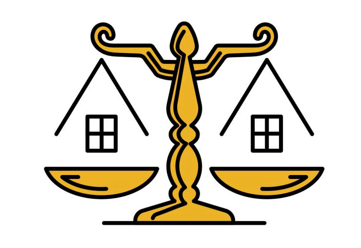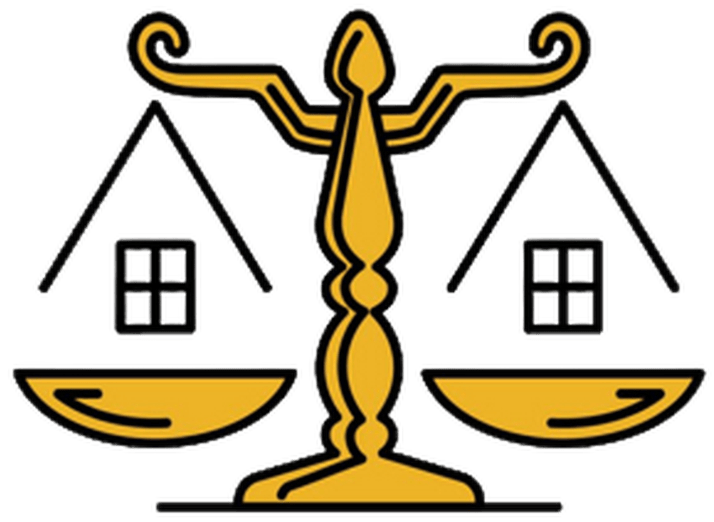What is Stamping and Up-Stamping of a Mortgage Document?
Introduction
In the realm of real estate and secured transactions, mortgage documents play a vital role in establishing the legal right of a lender over a borrower’s property as collateral for a loan. However, for a mortgage to be valid, enforceable, and admissible in court, it must undergo proper stamping and, where applicable, up-stamping.
Stamping and up-stamping are core legal and fiscal processes governed by the Stamp Duties Act in Nigeria. Failure to comply can lead to severe consequences, including inadmissibility of the mortgage in legal proceedings and loss of priority among creditors.
This article provides an in-depth exploration of stamping and up-stamping in mortgage transactions in Nigeria, including definitions, procedures, relevant laws, financial implications, timelines, penalties, and a real-life case study to bring clarity to practice.
1. Understanding the Concept of Mortgage in Nigeria
A mortgage is a legal agreement in which a borrower (mortgagor) transfers an interest in real property to a lender (mortgagee) as security for a loan.
Types of Mortgage:
Legal Mortgage – registered with perfected title.
Equitable Mortgage – created by deposit of title deeds or agreement to create a legal mortgage.
2. What is Stamping of a Mortgage Document?
Stamping refers to the payment of stamp duties on a mortgage document, which validates the instrument as required by law.
Legal Basis:
Governed by the Stamp Duties Act (Cap S8, LFN 2004)
Enforced by the Federal Inland Revenue Service (FIRS) and State Internal Revenue Services (IRS)
Purpose of Stamping:
To give the mortgage document legal effect
To make the document admissible in court
To meet statutory registration requirements
To raise government revenue
3. Stamp Duties on Mortgage Documents
Stamp duty is charged ad valorem, meaning based on the value of the mortgage (loan amount).
Rates:
Legal Mortgage: 0.375% of the loan sum
Equitable Mortgage: 0.375%
Deed of Release/Discharge: Flat rate (e.g., ₦500)
4. What is Up-Stamping of a Mortgage Document?
Up-stamping refers to the process of paying additional stamp duty when the amount secured by the mortgage increases beyond the original sum stated in the stamped mortgage document.
Why Up-Stamping is Necessary:
Loan facility is increased or restructured
Original mortgage is re-used for additional loan drawdown
To maintain legal validity for enforcement
5. Legal Implications of Non-Stamping or Non-Up-Stamping
Document becomes inadmissible in evidence
Loan may become unenforceable
Mortgage may lose priority to other registered interests
Penalties and interest may accrue on unpaid stamp duty
6. Procedure for Stamping and Up-Stamping
Step 1: Assess the Document
Prepare the mortgage deed and calculate the stamp duty payable based on the loan value.
Step 2: Submit for Assessment
Submit the deed to the appropriate tax authority (Federal or State IRS) for duty assessment.
Step 3: Payment of Stamp Duty
Make payment via the designated platform (e.g., Remita for FIRS).
Payment receipt is generated.
Step 4: Stamping of Document
Physical or e-stamp impression is placed on the mortgage deed.
Date of stamping is recorded.
Step 5: Up-Stamping Process
Submit the original stamped mortgage for re-assessment based on the new loan value.
Pay the differential duty.
The tax authority updates the document with new stamp duty paid.
7. Role of the Federal and State Governments
FIRS handles stamping for corporate entities and inter-state transactions.
State IRS handles individual and intra-state transactions.
Double stamping may apply in some cases if federal and state interests intersect.
8. Timelines and Penalties
Timeline:
Must be stamped within 30 days of execution.
Penalties for Late Stamping:
Monetary penalty and interest on unpaid stamp duty
Document cannot be tendered in court
Reputational risk and regulatory sanctions
9. Case Study: XYZ Ltd v. First Omega Bank Plc
Background:
XYZ Ltd secured a ₦500 million loan from First Omega Bank with a mortgage over its Lagos property. The mortgage was stamped accordingly.
Issue:
One year later, the facility was increased to ₦900 million without up-stamping the mortgage deed.
Legal Action:
The company defaulted. The bank sought to enforce the mortgage in court.
Defense Raised:
XYZ Ltd argued that the mortgage was only stamped for ₦500 million, not ₦900 million, making the excess amount unenforceable.
Court’s Decision:
The court ruled:
Mortgage enforceable only to the stamped amount.
Bank could not claim the balance of ₦400 million through the mortgage instrument.
Lessons:
Always up-stamp when loan amount increases.
Failure to do so limits enforcement rights.
10. Importance to Lenders, Lawyers, and Borrowers
For Lenders:
Essential for loan security
Legal enforceability in event of default
For Lawyers:
Duty to advise on full compliance
Drafting and filing responsibilities
For Borrowers:
Awareness of cost implications
Avoidance of disputes and penalties
11. Digital Stamping and Reforms
FIRS now provides e-stamping services.
Reduces fraud and improves transparency.
Lawyers and real estate firms can obtain e-stamping certificates online.
12. Checklist for Proper Mortgage Documentation
✅ Draft clear and enforceable mortgage deed
✅ Assess and pay stamp duties promptly
✅ File with FIRS or State IRS as appropriate
✅ Monitor for any increase in loan value
✅ Ensure timely up-stamping
✅ Register the mortgage at the Land Registry and Corporate Affairs Commission
13. Other Related Legal Requirements
Governor’s Consent under the Land Use Act
Registration at the Lands Registry and Corporate Affairs Commission (CAC) for corporate mortgagors
Perfection of title where applicable
14. Frequently Asked Questions (FAQs)
Q1: What happens if I don’t stamp my mortgage?
You lose the right to enforce it in court, and it becomes legally voidable.
Q2: Can up-stamping be done at any time?
Yes, but penalties may apply if delayed beyond 30 days of the increase.
Q3: Is up-stamping required for overdraft facilities?
Yes—if the facility increases beyond the original amount secured.
Q4: Who pays for stamping and up-stamping?
Typically, the borrower bears the cost, but this can be negotiated.
Conclusion
Stamping and up-stamping are not mere formalities—they are critical compliance steps that determine whether a mortgage document is legally valid and enforceable. Every party involved in a mortgage transaction must pay close attention to stamping obligations under the law to avoid costly mistakes.
Whether you’re a lender, borrower, or legal practitioner, understanding and complying with stamping and up-stamping rules will protect your interest and ensure smooth real estate and finance operations in Nigeria
Processing a Mortgage? Don’t Forget the Legal Stamp That Secures It!
Whether you’re creating a new mortgage or increasing an existing facility, stamping and up-stamping are legal requirements you cannot afford to overlook. Without proper stamp duty compliance, your mortgage document could become invalid, unenforceable, and inadmissible in court.
At Chaman Law Firm, we ensure your mortgage transactions are legally protected from start to finish:
✅ Drafting of legal mortgage instruments
✅ Accurate stamp duty calculations and payments
✅ Timely up-stamping for increased loan amounts
✅ Filing and registration at Lands Registry and CAC
✅ Legal advisory on enforceability and risk management
📞Phone: 08065553671, 08096888818
✉ Email: chamanlawfirm@gmail.com
📍 Address: 115, Obafemi Awolowo Way, Allen Junction, Ikeja, Lagos, Nigeria
🌍Click here to learn more about Chaman Law Firm
💼 Chaman Law Firm — Your Trusted Legal Partner for Secured Transactions.


